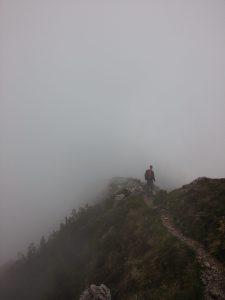Mindfulness: A Coping Skill for Anxiety

Feelings of anxiety are very common, especially when things have been unsettled, unpredictable, and feel unsafe. Before we work on helping you with those feelings of anxiety it’s important to define anxiety.
What is anxiety?
Anxiety is a feeling of worry, dread or uneasiness that can have a number of different symptoms:
-
-
-
-
- Feeling restless, wound-up, or on-edge.
- Being easily fatigued.
- Having difficulty concentrating.
- Being irritable.
- Having headaches, muscle aches, stomachaches, or unexplained pains.
- Difficulty controlling feelings of worry.
- Having sleep problems, such as difficulty falling or staying asleep.
-
-
-
Feelings of anxiety can differ from an anxiety disorder based on the longevity of the symptoms and how often they appear. You may feel anxiety before a test, speaking in front of a group of people or trying something new. You may also get this feeling when a relationship feels rocky and you are unsure about your future.
Anxiety thoughts might sound like this: “what happens if I fail?” “what if people judge me?” “what if I look stupid?” “What if I don’t get the job, how will I pay my rent?” “What if they break up with me?”
As much as anxiety doesn’t feel like a protective mechanism, it often is trying to help you. Anxiety projects into the future what the worst case scenario may be and tries to prepare you for that situation. The problem that we encounter is when anxiety can’t differentiate its’ projections about the future from your reality and continues to ruminate on those possibilities even when it is no longer helpful. While there is no one-size-fits all solution to help feelings of anxiety, we do know that mindfulness has been shown to help reduce anxiety symptoms (Khoury et al., 2013).

Mindfulness
Mindfulness is the ability to be present in your present moment as you are. There are a number of mindfulness exercises that can help you practice this, one of which is called sensory grounding. You may have heard the term “grounding” before and maybe you already know what that is (thanks, tiktok!) Sensory grounding is when we engage all of our senses in the present moment and slow down to pay attention to what’s happening in the here and now. One way you can practice this is:
- Notice 5 things that you can see and describe what they look like (i.e. the blue book, the ocean waves, the flickering lightbulb, a person walking past the window, etc.)
- Notice 4 things you can touch and describe what they feel like (i.e. the couch cushion is soft and squishy, my mug is warm and smooth, the chair is hard against my back)
- Notice 3 things you can hear in that moment (i.e. the cars going by, the air conditioning, your breath)
- Notice 2 things that you can smell and what they smell like (be intentional about smelling things around you: the candle on the table, the smell of your clothing, notice if you can smell your perfume, have an essential oil available to smell)
- Notice 1 thing that you can taste (if you can’t taste anything find something to take a sip of, or have a breath mint or a piece of gum and stop and notice what the flavours are that you can taste).
References
- Khoury, B., Lecomte, T., Fortin, G., Masse, M., Therien, P., Bouchard, V., … & Hofmann, S. G. (2013). Mindfulness-based therapy: a comprehensive meta-analysis. Clinical psychology review, 33(6), 763-771. https://www.sciencedirect.com/science/article/abs/pii/S0272735813000731?via=ihub




